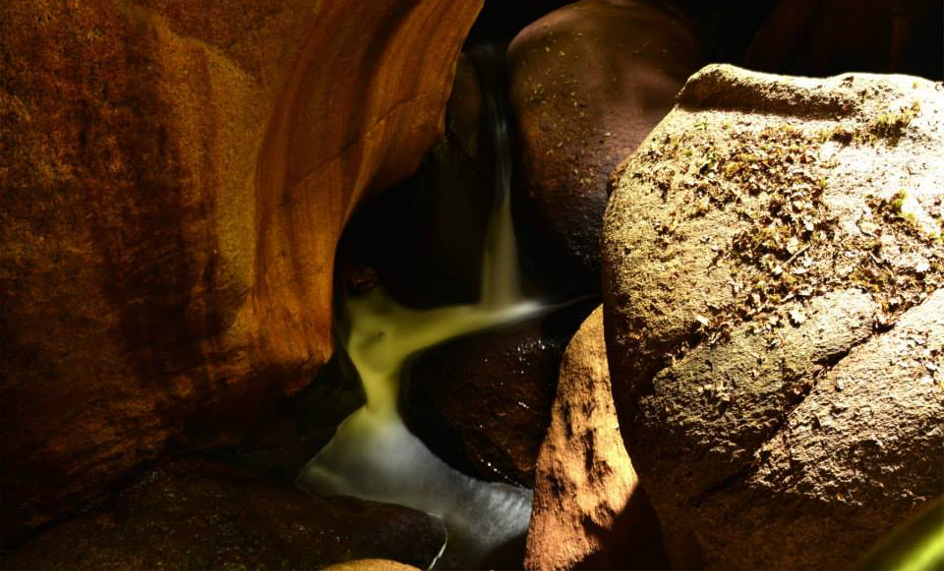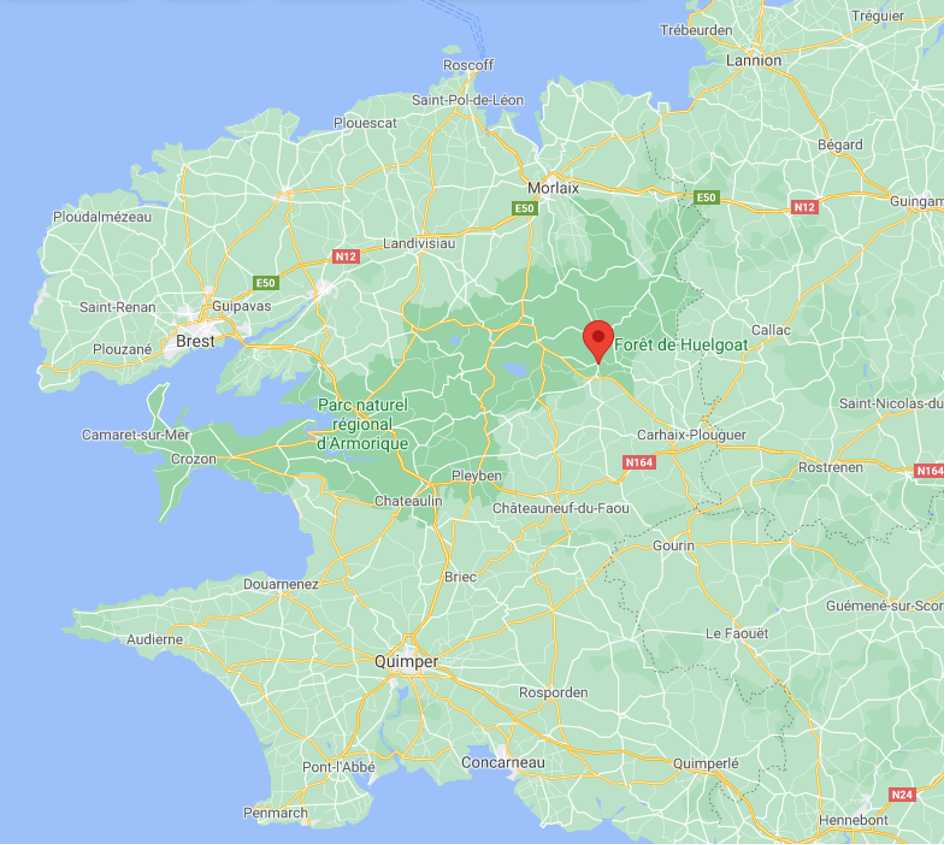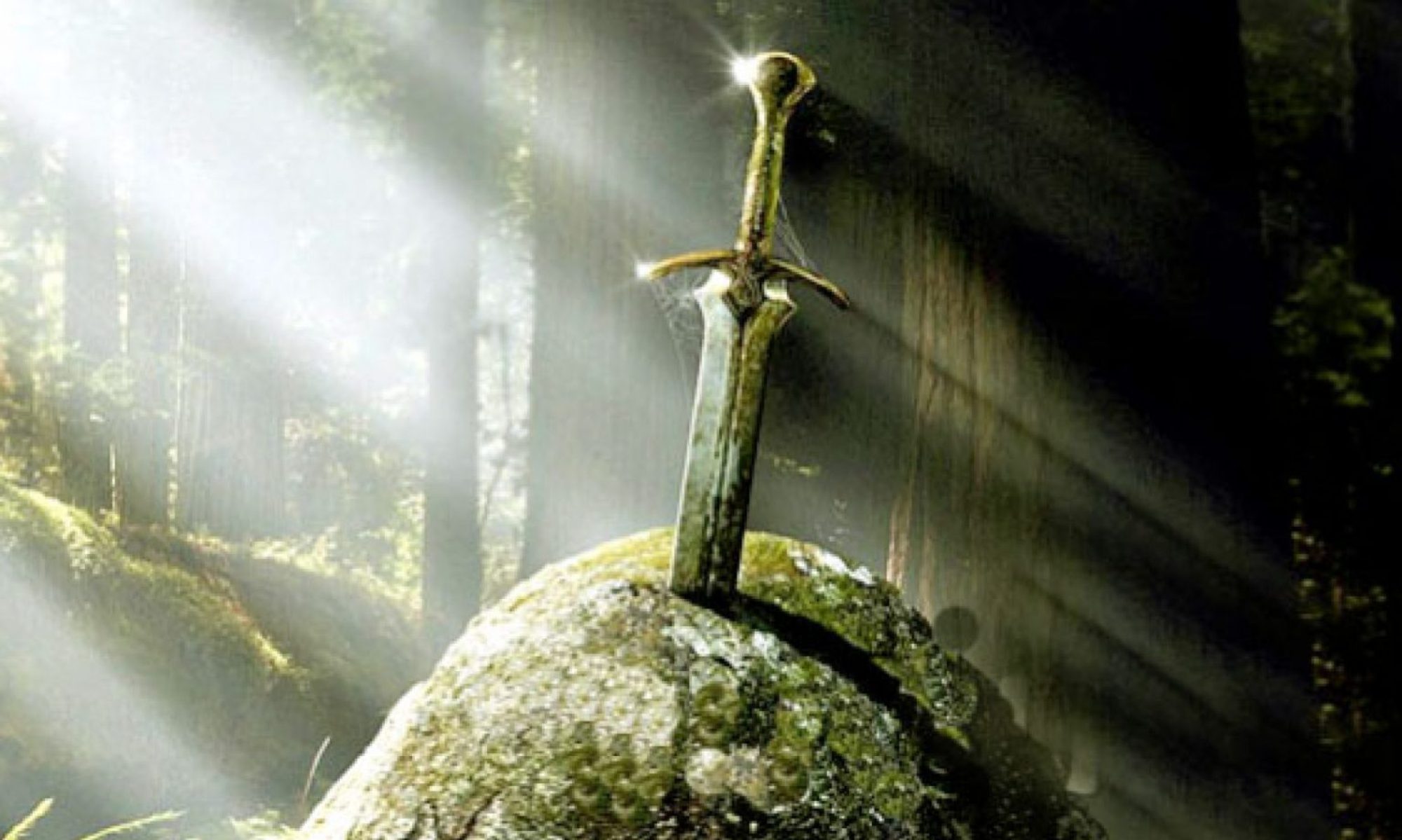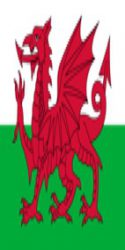
READING / DARLLEN SEICIG
English:
I will ask the oracle with holy water, candles, river sand and water of the fountain of Barenton (Merlin the wizard).
You will get direct answers from entities, deities and all supernatural characters of this incredible word.
Which one will answer you, fairies, Aerfen or the Headless horseman? Ask to know.
You can ask the Welsh option to get a part of the reading in the language of ancients.
Cymraeg:
Gofynnaf i’r oracl gyda dŵr sanctaidd, canhwyllau, tywod afon a dŵr ffynnon Barenton (Myrddin y dewin).
Fe gewch atebion uniongyrchol gan endidau, duwiau a holl gymeriadau goruwchnaturiol y gair anhygoel hwn.
Pa un fydd yn eich ateb chi, tylwyth teg, Aerfen neu’r marchogwr di-ben? Gofynnwch am wybod.
5 questions 10,5£ ORACLE OF RIVERS
6 question 12£ ORACLE OF RIVERS
7 questions 13£ ORACLE OF RIVER
10 questions 15£ ORACLE OF RIVER
ENGLISH
Traditionally, in Celtic legends, water is the frontier of the “Other World”.
Whoever crosses it reaches the realms where life lasts almost eternally, in joy and abundance. Fairies welcome mortals there.
If you look closely at the streams, you will see that it is indeed a fairy mirror.
Once you have crossed this spiritual opening, the other world awaits you, with its enchanting creatures. There, we unmoor ourselves from the world, there all the landmarks are lost… esotericism and divination take on all their meaning.
CYMRAEG (Welsh)
Yn draddodiadol, yn y chwedlau Celtaidd, dŵr yw ffin y “Byd Arall”.
Mae pwy bynnag sy’n ei chroesi yn cyrraedd y tiroedd lle mae bywyd yn para bron yn dragwyddol, mewn llawenydd a digonedd. Mae tylwyth teg yn croesawu meidrolion yno.
Os edrychwch yn ofalus ar y nentydd, fe welwch mai drych tylwyth teg ydyw yn wir.
Ar ôl ichi groesi’r agoriad ysbrydol hwn, mae’r byd arall yn aros amdanoch chi, gyda’i greaduriaid hudolus. Yno, rydyn ni’n dad-wneud ein hunain o’r byd, mae’r holl dirnodau ar goll … mae esotericiaeth a dewiniaeth yn arddel eu holl ystyr.
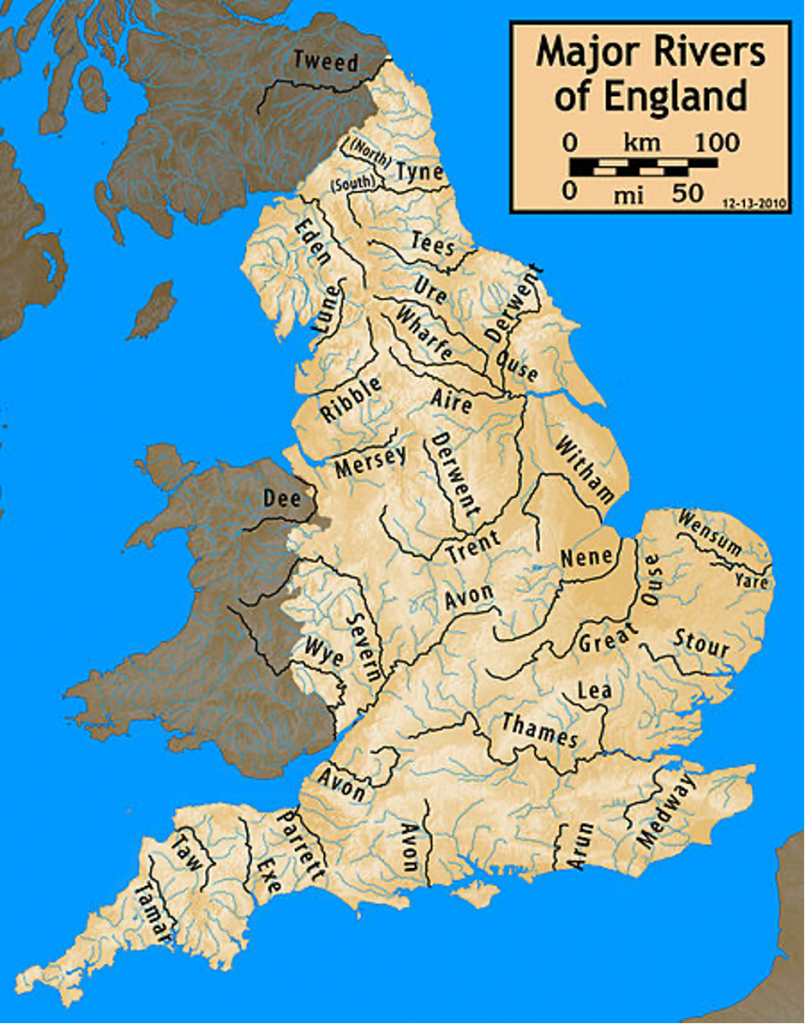
River TEES
The River Tees in northern England, rises on the eastern slope of Cross Fell in the North Pennines and flows eastwards for 85 miles (137 km) to reach the North Sea between Hartlepool and Redcar near Middlesbrough.
The name Tees is Brittonic origin, it means “boiling, excitement”
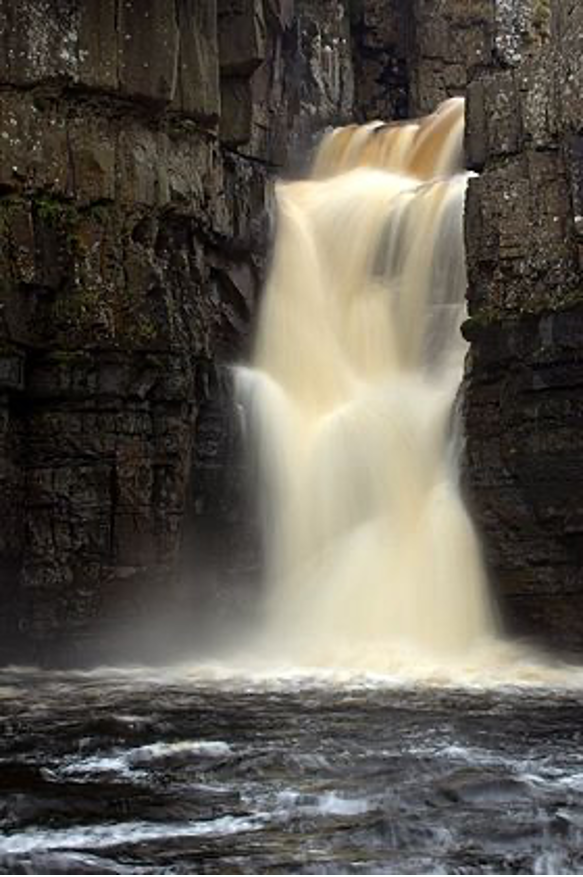
River Trent
The River Trent is the third-longest river in the United Kingdom. Its source is in Staffordshire on the southern edge of Biddulph Moor.
The name “Trent” is possibly from a Romano-British word meaning “strongly flooding”. More specifically, the name may be a contraction of two Romano-British words, tros (“over”) and hynt (“way”).
This may indeed indicate a river that is prone to flooding.
Trent Aegir
Ægir (anglicised as Aegir; Old Norse ‘sea’), Hlér (Old Norse ‘sea’), or Gymir (Old Norse less clearly ‘sea, engulfer’), is a jötunnand a personification of the sea in Norse mythology. In the Old Norse record, Ægir hosts the gods in his halls and is associated with brewing ale. Ægir is attested as married to a goddess, Rán, who also personifies the sea, and together the two produced daughters who personify waves, the Nine Daughters of Ægir and Rán, and Ægir’s son is Snær, personified snow. Ægir may also be the father of the beautiful jötunn Gerðr, wife of the god Freyr, or these may be two separate figures who share the same name (see below and Gymir (father of Gerðr)).
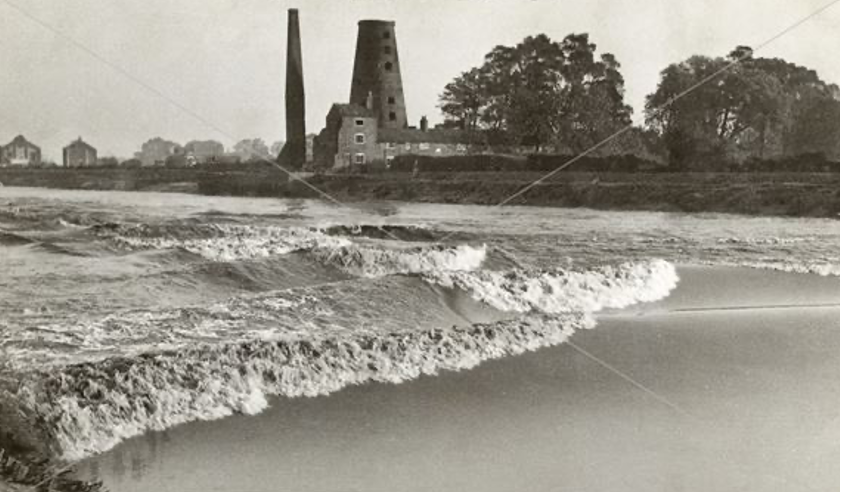
River Tamar, Tavy and Taw
The Tamar (/ˈteɪmɑːr/; Cornish: Dowr Tamar) is a river in south west England, that forms most of the border between Devon (to the east) and Cornwall (to the west).
The name Tamar (or Tamare) was mentioned by Ptolemy in the second century in his Geography. The name is said to mean “Great Water.”
The name of the Tamar is thought to come from the the legend of Tamara the Water Nymph. Read the Legend of Tamara.
The story of three rivers: Tamar, the Tavy and the Taw.
In a cave deep beneath the ground an earth nymph was born to two earth spirits. They called the child Tamara and she grew to be radiant to look at and bubbling in spirit.
Now, the life underground was not suited to a light hearted nymph and as she grew older Tamara began to explore. One day, she found herself above ground and unusual for her kind Tamara adored the sunshine.
Taking every opportunity, she was given, Tamara took herself along the earthen passages to new destinations above ground.
Best of all she liked the moors where the sun was high and bright. Living in the moors at that time were many giants. Tamara’s parents hated and feared the giants for they were rough and wild.
Two young giant brothers called Tavy and Tawrage spotted Tamara out exploring the moors and they both decided she was to be theirs. Tamara spent some days teasing the two giants. Running into sight and then disappearing on a chase across the moors. One day the two brother giants came across Tamara napping under a bramble bush at Morwenstow and sat down either side of her trapping Tamara between them. You would perhaps think it would be terrifying for an earth nymph to wake up between two huge giants, but Tamara loved the attention and played along with their game. Tavy and Tawrage were serious about Tamara as both had fallen in love with her, they vowed to keep her there until she had made a choice between them. The three sat laughing together as dusky clouds rolled down across the moors.
Tamara’s parents missed her bright laugh and set out to seek her. Seeing his daughter with the giants made her father growl with anger at his most hated enemies. Try as he did, Tamara would not be persuaded to come home to their rich, dark cavern. Anger burst from him, and rather than let his daughter marry a giant he cursed her to turn into a river of water flowing always to the sea. Crying Tamara melted before her father and her tears carried her on her first following to the sea.
When Tavy woke up, he ran heartbroken to his father. The giant understood his son’s grief would not heal. He transformed Tavy into a stream, running beside Tamara. Tavy would seek her always, running along by her side.
Tawrage woke late, realizing what had occurred he ran to an enchanter in the hills.
The enchanter changed Tawrage into a stream like his brother. But in his desperation to catch up and find Tamara, Tawrage took a wrong direction, and was forced to run away from her always. Tawrage, Tavy and Tamara still flow from the moors all the way to the sea .We call them Taw, Tavy and Tamar.
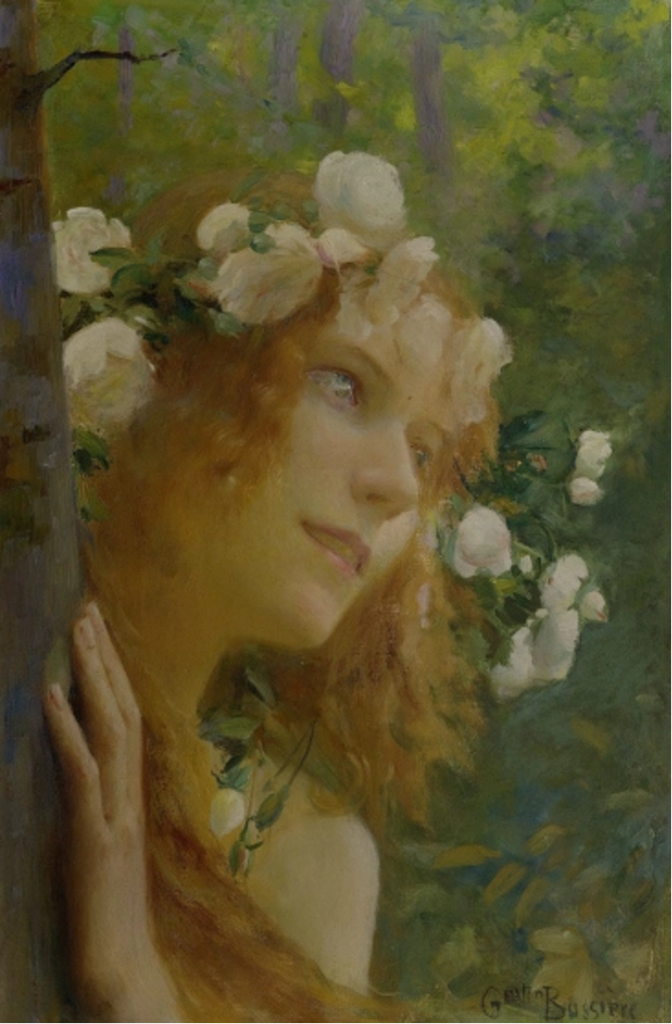
The River Dour -‘Dover’s Little River’
The River Dour is Dover’s 4-mile-long river starting with tributaries in the Alkham Valley, Temple Ewell/Lydden valley and many underground chalk streams. The name ‘Dour’ is a Celtic word meaning ‘The Waters’. The Dour also gives its name to Dover as the town and river name both mean ‘The Waters’ and ‘Dover’ was spelt ‘Dour’ and ‘Douer’ at various points.
As the Dour enters the centre of the village, on the right is Church Hill that leads to Scotland Common and Ghost Hill. Local folklore tells us that a handsome young man, riding a horse and carrying an older female pillion fashion, haunts Ghost Hill. The story has been recounted in the book Haunted Dover, and took place during the American War of Independence (1776-1783). Tom, a despatch rider, was taking an important message that had arrived from France, to London. Before leaving Dover he had called on his beloved, Elizabeth, daughter of Benjamin Worthington, who owned the Ship Hotel, on Custom House Quay – now the Snargate Street side of the Granville Dock.
Unfortunately, Tom was deliberately drugged so was unable to take the message and Elizabeth took it instead. At Temple Ewell, she met with an accident at the foot of Ghost Hill and her frozen lifeless body was returned to Dover. Tom, still suffering the effects of the drug, rode as fast as he could to London and delivered the message but exhaustion got the better of him and he collapsed and died. Elizabeth, however, made a slow recovery and the story goes that Tom’s ghost came back to Temple Ewell and they would meet until she too eventually died. The memory of the two lovers and their horse lives on through the name of the hill!
Passage clandestine origin of PILLION A pillion is a secondary pad, cushion, or seat behind the main seat or saddle on a horse, motorcycle, bicycle or moped. A passenger in this seat is said to “ride pillion“. The word is derived from the Scottish Gaelic for “little rug”, pillean, from the Latin pellis, “animal skin”.
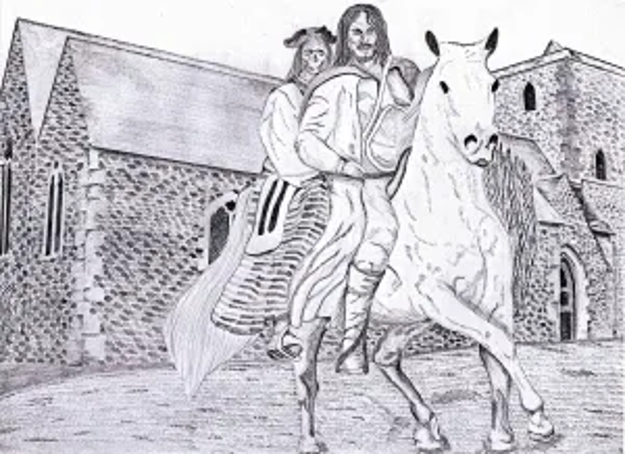
OUSE RIVER SUSSEX
Ouse’ is a common name for rivers in England, with examples including the Ouse in Yorkshire, and the Great Ouse and Little Ouse in Norfolk, Suffolk and Cambridgeshire.
The name may stem from the Celtic word Ūsa. (water river)
Next the river there is Devils Dyke
It was one of the last areas in England to be converted to Christianity in the 7th Century, and legend has it that this drove the Devil mad with rage.
He decreed that if the people were going to turn their back on him then he would dig a trench to allow the sea to flood in.
He told this to St Cuthman who asked what the Devil would do if he failed. Laughing at the thought of this, the Devil said he would leave them all in peace forevermore.
As he dug, huge mounds of earth were created and it’s said you can still see them in the hills of Cissbury Ring, Mount Caburn and Firle Beacon.
St Cuthman devised a plan and informed Sister Ursula of his intentions.
As the Devil grew tiresome the sun started to appear in the east with the sound of a cockerel crowing – but it was actually Sister Ursula, who was lighting up a lamp nearby
Shamed at his failure, he left and never returned.
Next the river you have
Kingley Vale
Many know that Kingley Vale is an incredible trail that has one of the finest yew forests in Western Europe, home to a grove of ancient trees that are some of the oldest living things in Britain.
For years people have wondered what lies beneath these yew trees and it’s believed they were planted as a memorial to the battle between the Vikings and Anglo Saxons in 859.
Folktales say that the woods are haunted by the Vikings, with some suggesting the gnarled trees transform into human figures in the moonlight.
Other tales include that the trees used to be a ceremonial meeting place for the druids over two thousand years ago.
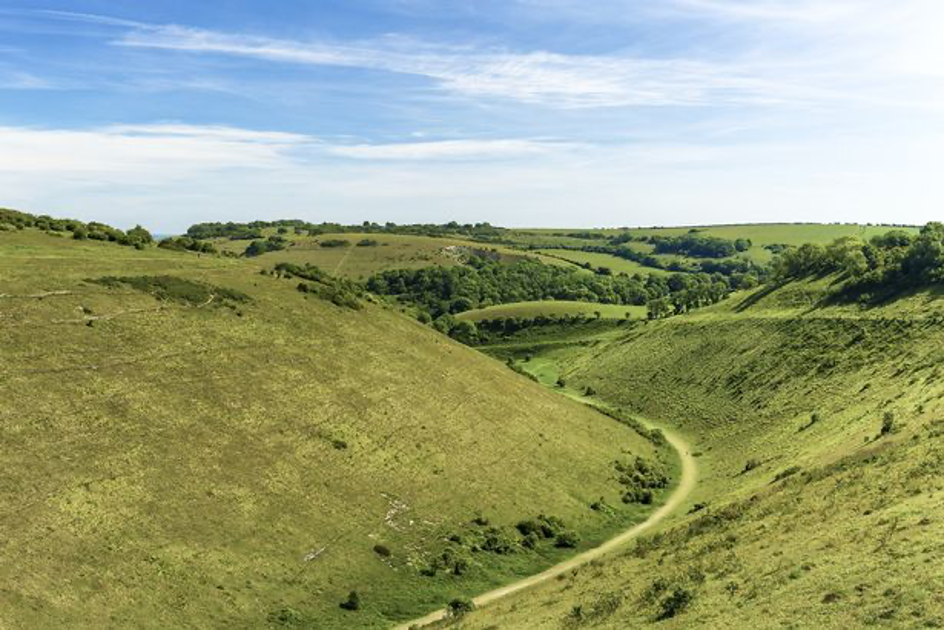
ADUR
The fairies of Sussex
Fairies are mythical creatures that are part of folklore tales in every county but they seem to be extremely popular in Sussex and especially on the Downs.
It’s been said that they’ve been seen dancing on Harrow Hill near Patching, at Cissbury Ring, Chanctonbury Ring and on Tarberry Hill.
The River Adur is situated in West Sussex and stretches from Henfield to Shoreham-by-Sea. The watercourse was once a major trade thoroughfare, serving the thriving medieval villages of Steyning, Beeding and Bramber. Its mouth forms the ancient harbor situated at Shoreham, which has pre-Roman origins. Having witnessed the turbulence and traumas of the last 2,000 years of English history, the river is now associated with dozens of terrifying ghost stories and apparent Demon sightings. Here’s our favorites.
(1) The Headless Man, Bramber. (Headless horseman)
Bramber is a pretty ancient place with strong connections to England’s royal past. It should come as no surprise therefore that the location plays host to the ghost of a beheaded cavalier. The decapitated figure is said to pace the river banks, as though waiting for a craft to arrive and collect him.
(2) The Grinning Man, Steyning.
The grinning man is thought to be the spirit of a local man who was wrongfully accused of murdering a tradesman and put to death for this crime. It is believed that the man in question was afflicted with learning disabilities, which made him a victim of prejudice and superstition. He manifests near the banks of the river and is said to grin maniacally at witnesses, sometimes clapping his hands and dancing.
(3) The Dog-Faced Girl, Beeding Bridge.
This is a particularly creepy piece of folklore. For centuries, residents of Beeding have reported seeing a small child hiding in the shadows near Beeding Bridge. Although the shadows disguise her appearance, when the moonlight catches her face she is said to have the eyes, nose and mouth of a dog.
(4) The Blue Lady, The Footbridge, Shoreham.
The Blue Lady is said to pace the Tudor footbridge that spans the River Adur at Old Shoreham. She is described as tall and elegant and extremely life-like, except for her strange blue complexion. Witnesses have reported seeing the Blue Lady between the hours of 8.00pm and 1.00am and on various occasions she has been described as quietly sobbing. The apparition is thought to be the spirit of a young lady, who was deserted by her lover.
(5) The Mists, Shoreham to Beeding.
The sea mists that roll up the River Adur have long been associated with a terrifying superstition. Overtime, locals have reported an overwhelming and unnatural fog, that engulfs the plains around the river. The fog is so dense that those stranded in it are unable to see more than a few feet in front of them. Hapless villagers get lost in the mists, with many never seen again. Of those who do find their way back home, it is common for them to report seeing the faces of long dead mariners in the dense fog that surrounds them.
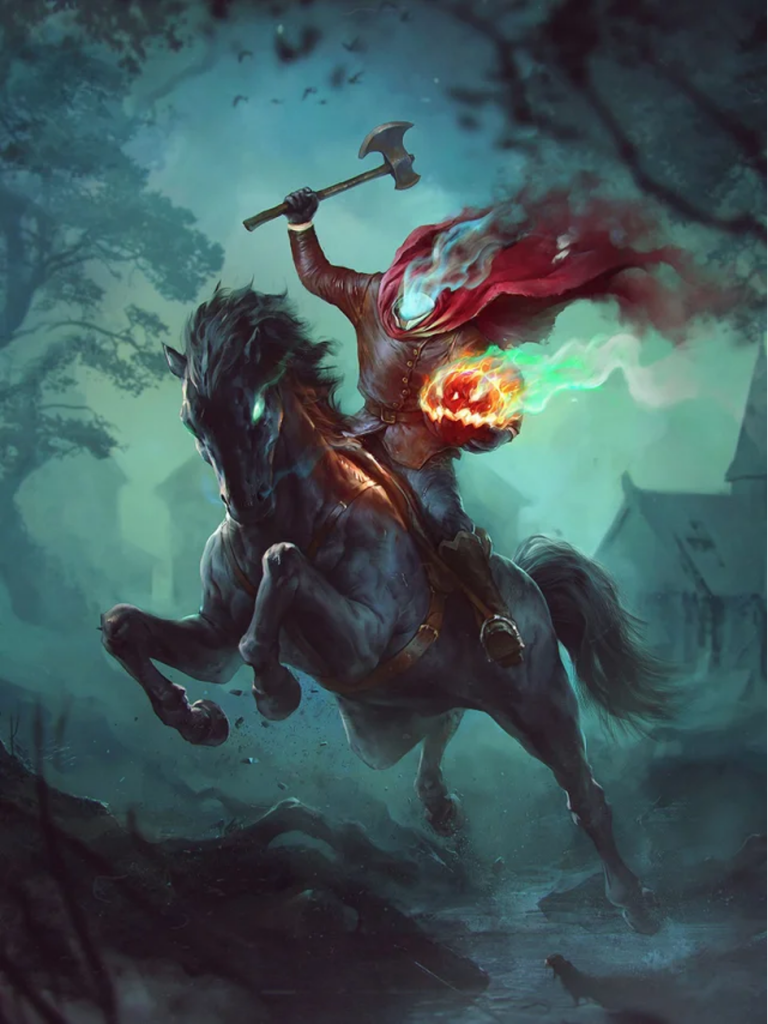
EDEN IN CUMBRIA
Pendragon Castle, looking down on the River Eden
According to legend, the castle was built by Uther Pendragon, father of King Arthur, who is said to have unsuccessfully tried to divert the river to provide its moat, as is recalled in a well-known local couplet:
Let Uther Pendragon do what he can,
Eden will run where Eden ran.
Uther (if he was indeed a real person) was possibly a 5th-century chieftain who led resistance to the invading Anglo-Saxons. According to another local legend, Uther and many of his men died here when the Saxons poisoned the well (but other legends give St Albans as the location for his death).

RIVER LUNE
Several elucidations for the origin of the name Lune exist. It may be that the name is Brittonic in genesis and derived from *lǭn meaning “full, abundant”, or “healthy, pure”
Ialonus Contrebis is the god of Lune.
(Redirected from Ialonus)
In ancient Celtic religion, Ialonus Contrebis or Ialonus or Gontrebis was a god (or perhaps two related gods) worshipped in what are now Lancashire and Provence. Ialonus is thought to be the god of clearings and/or meadows. He is known from three dedicatory inscriptions. In Lancaster he was invoked in conjunction with the goddess Fortune
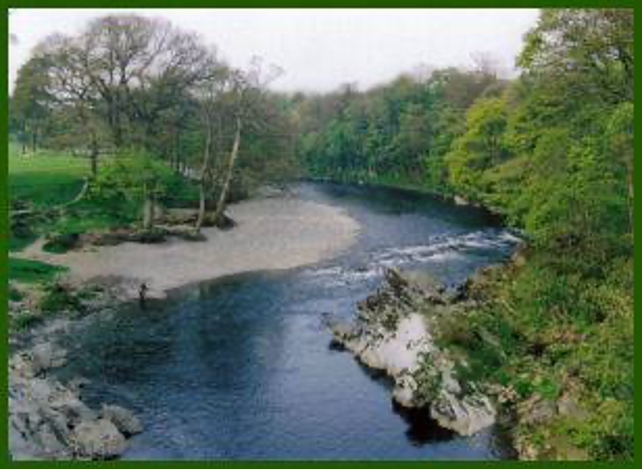
RIVER Ribble
The name Ribble may be a Brittonic compound-formation. The second element is the noun *pol, with connotations including “puddle, pond, upland-stream” (Welsh pwll).
The first is rö-, an intensive prefix, with nouns meaning “great” (Welsh rhy-, Cornish re-).
Ribble may once have been known as *Bremetonā . The meaning is “roaring”
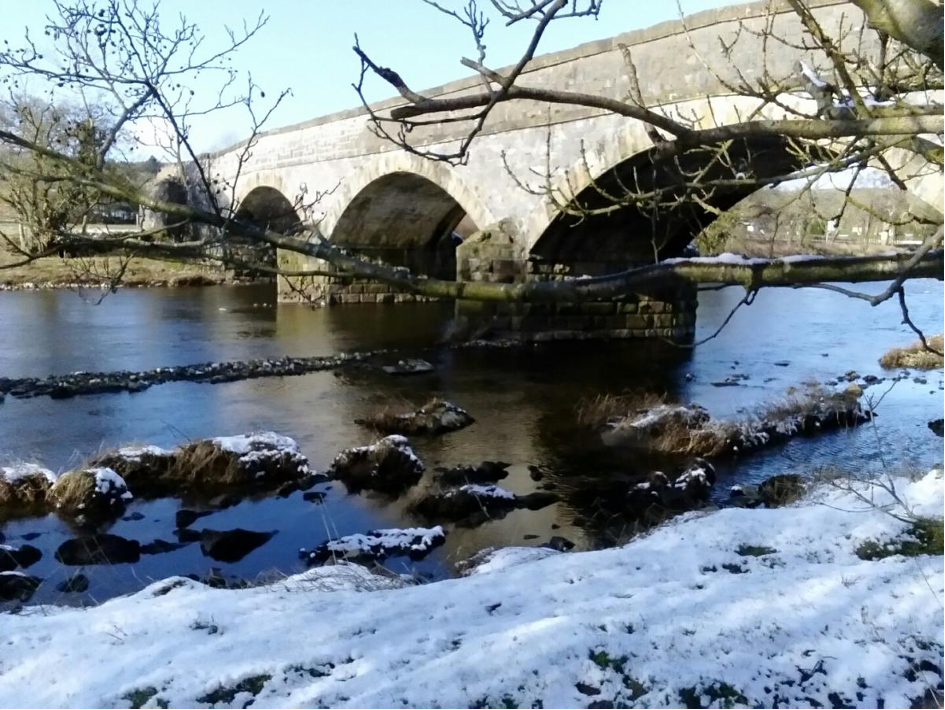
River Mersey
The Mersey is considered sacred by British Hindus, and worshipped in a similar way to the River Ganges. Festival of Immersion ceremonies are held annually on the river, in which clay figures representing the Hindu Lord Ganesha, the elephant deity riding a mouse, are submerged in the river from a ferry boat. Followers throw flowers, pictures and coins into the river.
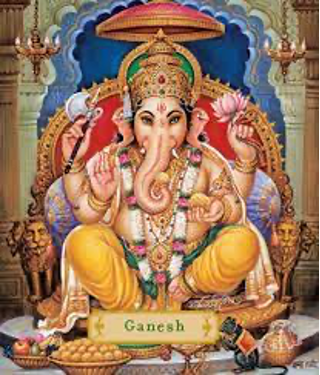
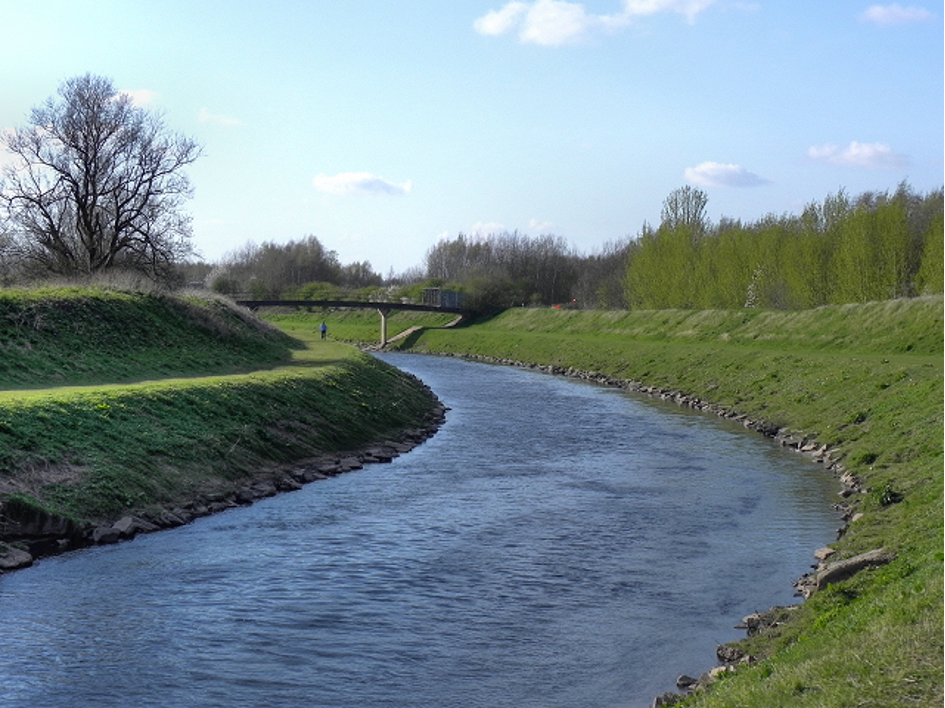
SEVERN
Afon Hafren
The name Severn is thought to derive from a British *sabrinā, possibly from an older form *samarina, meaning “land of summertime fallow”.
The name is recorded in the latinized form Sabrina in the 2nd century.
The Welsh form of the name is Hafren.
Sabrina is a nymph who had drowned in the river. In Shrewsbury, there is now a statue of Sabrina in the Dingle Gardens at the Quarry, as well as a metal sculpture erected in 2013.
There is a different deity associated with the Severn Estuary: Nodens, represented as mounted on a seahorse, riding on the crest of the Severn bore.
Nodens (Nudens, Nodons) is a Celtic deity associated with healing, the sea, hunting and dogs. He was worshipped in ancient Britain, most notably in a temple complex at Lydney Park in Gloucestershire, and possibly also in Gaul. He is equated with the Roman gods Mars, Neptune and Silvanus, and his name is cognate with that of the Irish mythological figure Nuada and the Welsh Nudd.
Hafren was a legendary British princess who was drowned in the River Severn (Welsh: Hafren; Old Welsh: Habren) by her repudiated stepmother Gwendolen. The legend appears in Geoffrey of Monmouth’s pseudohistorical chronicle Historia Regum Britanniae. According to Geoffrey, Hafren is the eponym of the Severn, which bears one of Britain’s most ancient river names.
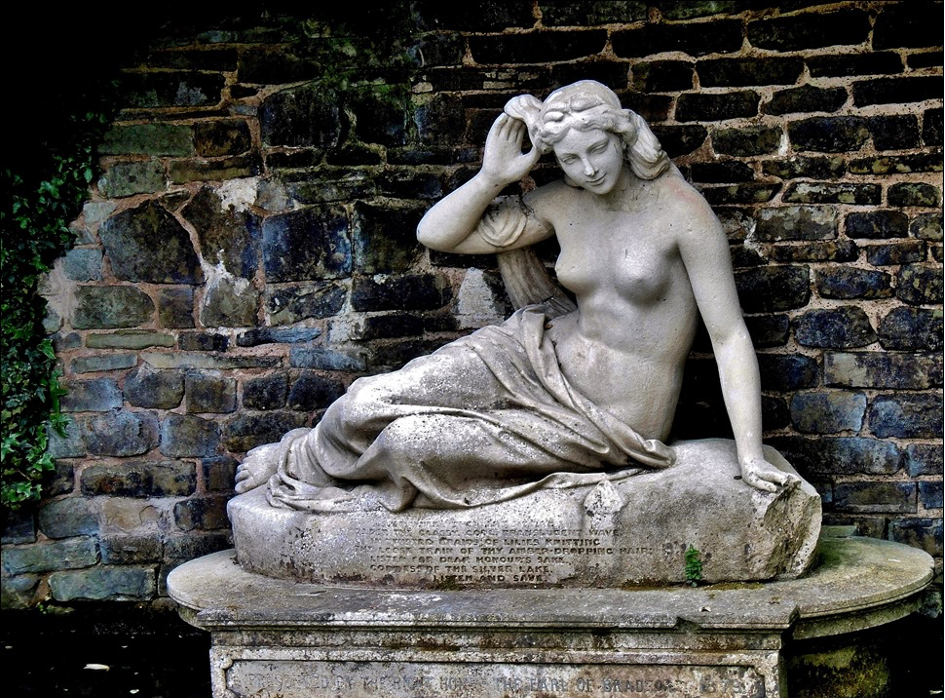
River Dee, Wales
The River Dee was the traditional boundary of the Kingdom of Gwynedd in Wales for centuries, possibly since its founding in the 5th century.
The name appears to derive from the Brythonic dēvā: “River of the Goddess” or “Holy River”.
The river is personified as the war and fate goddess Aerfen.
Aerfen is a Celtic goddess of fate and warfare, and the personification of River Dee in Wales.
The name Aerfen is the modern Welsh form of Common Celtic Aerten, which was derived from agro-, “carnage”, and tan-nu, “to broaden” or “to spread”, or ten-n-do-, “to break” or “to cut”.[
Together, Aerfen probably means “renowned in battle”.Local legend states that three human sacrifices had to be drowned in the river, to ensure success in battle.

The Thames
From Middle English Temese, is derived from the Brittonic Celtic name for the river, Tamesas.
The name may have meant “dark”.
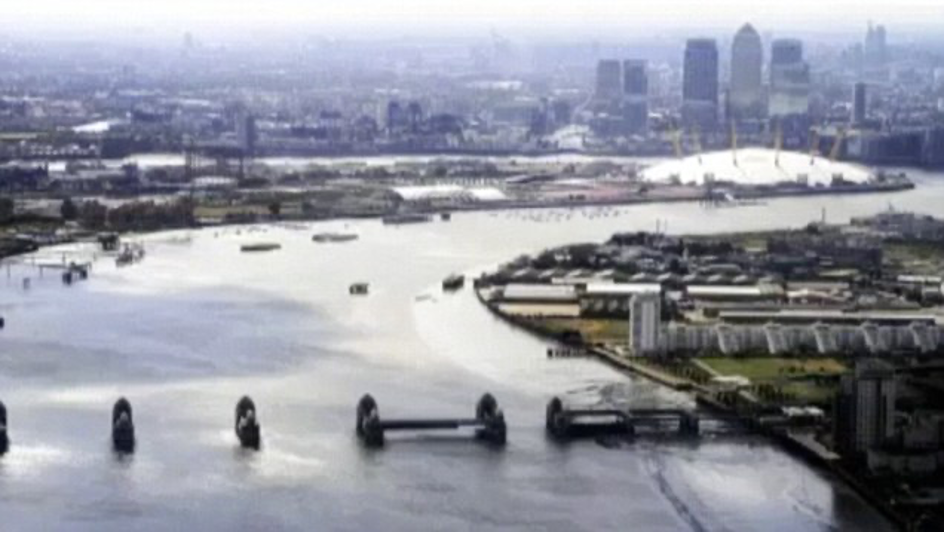
The River Lea
Lugus is the patron of trade and commerce, protector of travelers, and the inventor of all the arts
It was first recorded in the 9th century, although is believed to be much older.
Spellings from the Anglo-Saxon period include Lig(e)an in 880 and Lygan in 895, and in the early medieval period it is usually Luye or Leye.
It seems to be derived from a Celtic (brythonic) root lug-meaning ‘bright or light’ which is also the derivation of a name for a deity, so the meaning may be ‘bright river’ or ‘river dedicated to the god Lugus’.[4][5] A simpler derivation may well be the Brythonic word cognate with the modern Welsh “Li” pronounced “Lea” which means a flow or a current.
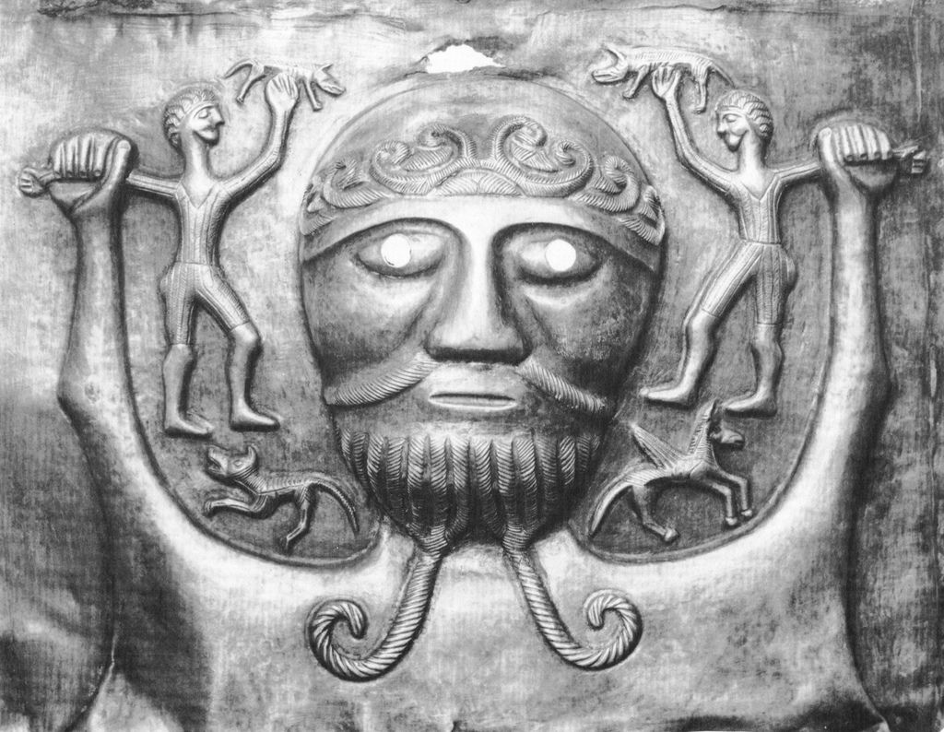
River Tweed
The River Tweed, or Tweed Water (Scottish Gaelic: Abhainn Thuaidh, Scots: Watter o Tweid, Welsh: Tuedd), is a river 97 miles (156 km) long that flows east across the Border region in Scotland and northern England.
Tweed is an Old Brythonic(Celtic) name meaning “border”.

River Ness
The hydronym Ness is of Pictish origin.
The name may be derived from Nessa, the name of a river goddess.
Ness (Irish: Neasa, Nessa; Old Irish: Neas, Ness), also called Nessa, is a princess of the Ulaid and the mother of Conchobar mac Nessa in the Ulster Cycle of Irish mythology.
Her father is Eochaid Sálbuide, king of the Ulaid.
According to one version of the legend, she asks the druid Cathbad what that day is a good day for, and he replies that it is a good day to conceive a king.
There are no other men around, so Ness takes Cathbad to bed, and Conchobar is conceived.
In other versions, Ness was brought up by twelve foster-fathers, and was originally called Assa (“easy, gentle”), because she was such a pleasure to foster.
Cathbad, who is a leader of a band of fianna (landless warriors) as well as a druid in this version, attacks her foster-fathers’ house, killing them all. Because the culprit cannot be identified, Eochaid is powerless to do anything about it, so Ness forms her own band of 27 fianna to track him down, and becomes known as Ní-assa (“not easy, not gentle”), or Ness.
However, one day, when she goes off on her own to bathe, Cathbad comes upon her alone and unarmed and demands her as his wife. She has no choice but to agree.
Eochaid gives the couple land in Crích Rois (a region covering parts of the modern counties of Louth, Monaghan and Meath), near the river Conchobar.
One night Cathbad is thirsty, and Ness brings him a drink of water from the river, but when he sees two worms floating in it he makes Ness drink it. Although the story specifically denies this is what makes her pregnant, there are many Irish stories in which significant characters are conceived when their mothers swallowed a tiny creature in a drink. Here, the father of her child is said to be Fachtna Fáthach, the High King of Ireland, who is Ness’s lover in spite of Cathbad.
While Ness and Cathbad are travelling to visit Fachtna, Ness goes into labour on the bank of the river Conchobar. Cathbad prophesies that if she can wait until the following day before giving birth, her son will share a birthday with Jesus Christ. She sits on a flagstone by the river, and the following day gives birth to a son, who is named Conchobar after the river. The baby tumbles backwards into the river, and Cathbad lifts him out. Cathbad makes a prophecy in verse of his future glory, in which he refers to him as “my son and my grandson”, suggesting there was once a tradition that Cathbad was Ness’s father, and that Conchobar was born of incest between them.
By the time Conchobar is seven, Fergus mac Róich is king of Ulster, and he falls in love with Ness. She consents to marry him on one condition – that he abdicate his kingship for a year in favour of Conchobar, so that his sons will be able to call themselves the sons of a king. Fergus consults with his nobles, and they advise him that the boy will be king in name only, so he agreed. But Conchobar, advised by his mother, is so crafty at distributing wealth and gifts that when the year is up, the Ulstermen won’t have Fergus back, and Conchobar keeps the kingship.
According to some traditions Ness is the mother of Cormac Cond Longas by incest with Conchobar (although in other traditions, Cormac’s mother is Conchobar’s wife Clothru).
She is also the mother of Conchobar’s sisters Deichtine and Findchóem.
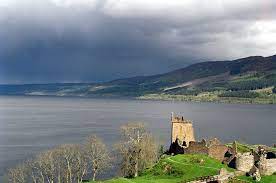
Elorn Brittany
A suicide attempt
The history of the Elorn dragon continues through the ages, since according to legend, it is the very origin of the name of the town of Plounéventer, near Brest (Finistère).
To understand how we get there, we have to go back to basics. As is often the case with legends, the substance of the matter is a bit obscure. There, in this case, it all started with a suicide attempt in the 6th century …
While riding along the Dour-Dourn river, near Roc’h Morvan castle, in La Roche-Maurice, two Christian knights, Néventer and Derrien, see a man at one of the castle towers .
They recognize the lord of Roc’h Morvan, named Elorn. They see him step over the parapet of the tower and throw himself from the top of it, into the river which flows at the foot of the castle.
Neither one nor two, the two knights rush to his aid and save the desperate man. Elorn is a little hurt, but mostly disgusted. If he wanted to end this, it was for a good reason: a dragon.
The river has changed its name since that history, to become the Elorn.
In dragon food
Elorn’s act of distress is tied to the practices of the time. According to legend, they had indeed enough to destabilize more than one.
King Bristokus had ordered a weekly raffle to nominate the victims of the dragon, who lived next door as a somewhat bulky, hungry neighbor.
In the book Traditional Legends of Brittany, Octave-Louis Aubert reports Elorn’s words as he would have said them to Néventer:
Know, knight, that very close to my house lodges a terrible dragon which devours people and animals. As soon as hunger brings him out of his lair, he causes irreparable devastation in the country.
Every Saturday, therefore, there was a draw between the lords. If nominated, they either decided to surrender themselves or choose someone of their choice to throw in the pasture.
And since Elorn was obviously bad luck, everyone in his garrison had already been sent to their deaths. There were only his wife, him, and their adorable two-year-old Riek. And no luck, Elorn had to nominate someone again (definitely, when you’re unlucky …). Rather than sacrifice his son, he had decided to kill himself.
I’d rather drown than hand him over to such a terrible death.
A promise
Also, the good deed of the two knights had embarrassed Elorn. Listening to his story, Saint Néventer and Saint Derrien tell themselves that they cannot stand idly by.
They promise Elorn to hunt the dragon. On one condition: that he embraces the Christian faith and builds a church on his land. Wooden cross, iron cross, the pact is over, and the knights go to the dragon’s lair.
Hunt the dragon
Not afraid once there, the two knights then order the dragon to come out of its cave.
The monster stepped out and its dreadful hissing horrified the audience. He was five fathoms long and big in body like a horse: his head resembled that of a gigantic rooster, his body was armored with hard scales which bristled, his mouth opened so wide that with a single mouthful, he swallowed a sheep. His eyes threw lightning that killed birds and children.
The knights are immediately less clever. But they still take their courage in both hands, and come forward to meet the dragon.
Shocked by the courage of the two men, the dragon lets himself pass a halter (or a scarf depending on the version) around his neck, allowing little Riek (what was he doing there, mystery) to lead him by the bridle to the castle.
It was pretty easy actually.
The dragon jumps into the sea
Proud of their capture, they will tell it to each other a little on the side of King Bristokus. Then proceed “to a nearby harbor where their ship was anchored.”
There they commanded the dragon to throw himself into the sea. He did so.
Rather docile for a wild dragon, right? According to legend, since he threw himself into this port, the place was renamed Poulbeunzual, which would mean “port where the beast was drowned”.
Today, it would be the Pointe de Pontusval, located in the new town of Plounéour-Brignogan-Plages. A place located… on the Côte des Légendes, as if by chance.
See the coast of Legends seen from the sky:
And, still according to legend, the son Riek built a church in accordance with the pact made with his father, who had struggled to honor him. The first church in a town called… Plounéventer, in reference to Saint Néventer.
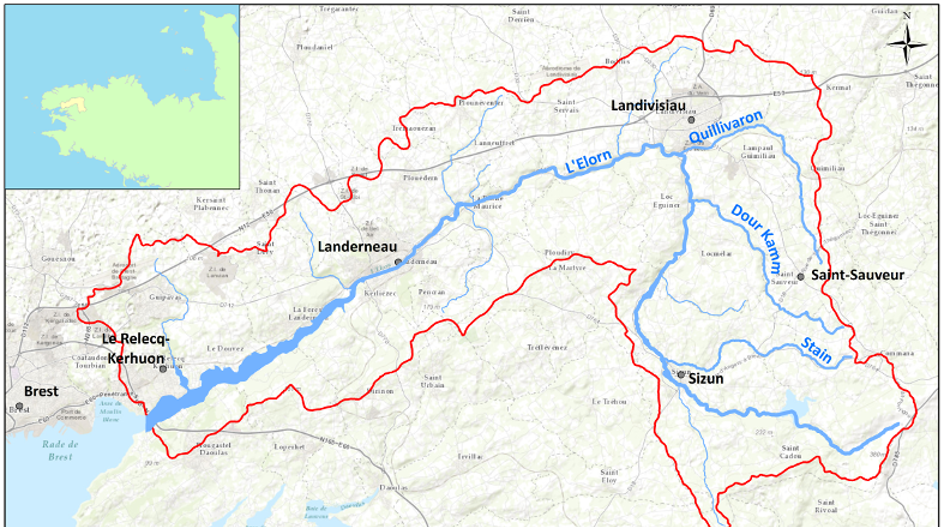
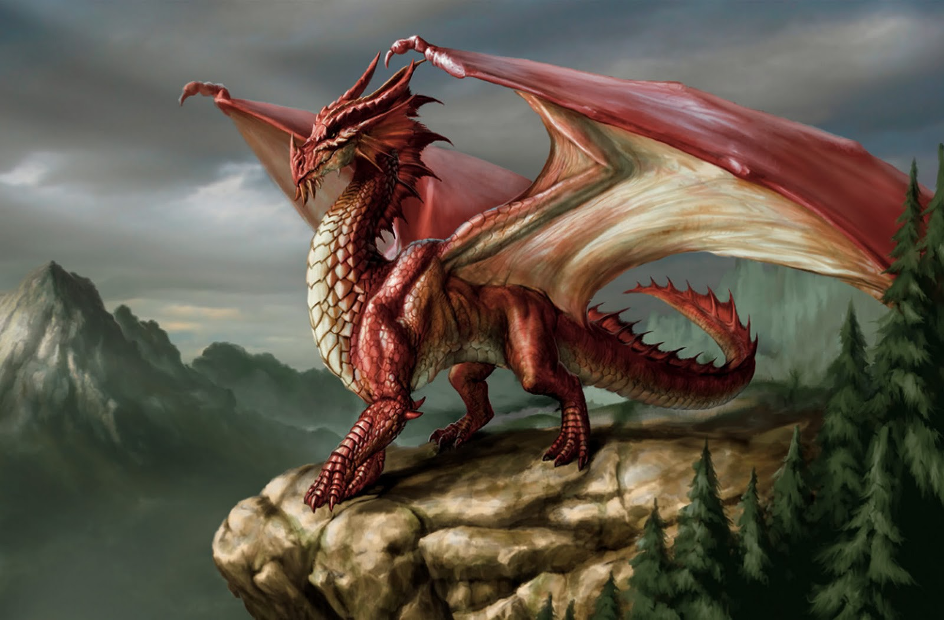
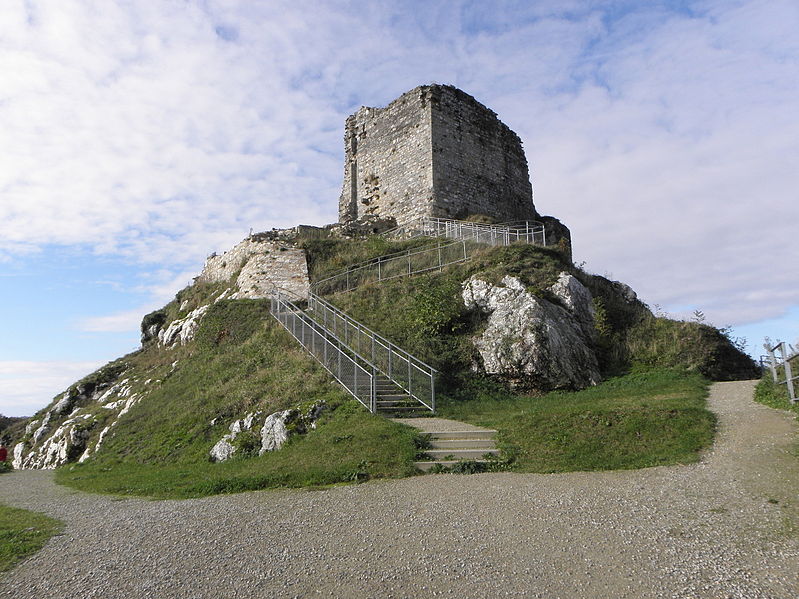
The river AFF
MORGANE IN VAL WITHOUT RETURN
The crimson, sheer rocks of the Vale of No Return echo the character of Morgana, the fairy princess, King Arthur’s half-sister. In revenge on the handsome Guyomarc’h, who had betrayed her, and his sweetheart, she condemned their bodies to suffer the pain of fire and ice. Then she locked them in the purple rock of the Vale. The rock of the False Lovers, young people petrified by the fury of the fairy, still stands above the Fairy Mirror. Are their hearts still beating under their clothes of red shale? For her revenge to be complete, Morgana decided to punish all the unfaithful lovers. She cast a spell over the web of tight valleys that form the Vale of No Return. All the unfaithful lovers who had the misfortune to pass by there remained prisoners of invisible walls of air erected by the fairy. The young knights thus captured lost sense of reality and of the past. Their long captivity seemed to them a brief moment full of pleasures …
Then came Lancelot, strong in his courage and love for the queen. With the help of a magic ring donated by the fairy Viviane, he discovered Morgana’s wiles. His daring reduced to nothing the evil appearances aroused by the fairy. She had to release all her prisoners. They then discovered that time had passed: their youth had fled … without return.
Lancelot is said to have ended Morgana’s enchantments today. Well, that’s what they say …
Monk garden
MANY QUESTIONS!
One of the most curious monuments in the forest stands on the Cerisier moor, shared between the municipalities of Tréhorenteuc and Néant-sur-Yvel. A long quadrilateral, a shape rare in Brittany: archaeologists know that it has been modified several times. For a time, it served as a tomb, but was it its primary destination? It resurfaced from the brush that had engulfed it during excavations in the 1980s, but its legends had not disappeared. The first one ? Monks a little bawdy, a little (too) drinkers, petrified on the spot by a God, wrathful. A fairly classic affair after all!
THE CURSED HUNT
The second ? At the time when Saint Méen directed his abbey, Lord Gastern reigned over Tréhorenteuc and its surroundings. One would hardly have found more cruel, more enjoyable, more impious and more violent than him. And since misfortune never happens alone, he was surrounded by a band of soldiers with equally sordid morals. Gastern’s nephew, a monk with Saint Méen, tried to bring a little light in so much darkness. His uncle was only laughing at his efforts. But when the young man begged him to attend All Saints Vespers in Tréhorenteuc, Gastern let out a loud roar of anger. “I will not go singing among your sparrows,” he yelled, “I will not bow to your cross. Like my ancestors, I am the terror of those who live on my lands; tomorrow I will hunt! Woe to the men, women and all game that crosses my path. Sing for me if you want, and pray to your god, so weak! “
THE BELIEF’S CURSE
All All Saints’ Day, ridges and valleys, moors and woods resounded with the barking of dogs. From Tréhorenteuc, we could hear the trumpets sounding, the men screaming and the horses neighing. But when the parishioners came out of vespers, a deep silence overwhelmed the moors and the forest. And no light was shining behind the windows of the mansion any longer. Night had come to veil the ridges, shadows and thick mists. The hunt had not yet returned.
BRAVERY !
It took a lot of courage for the peasants to climb the hill, armed with pitchforks, axes and pitch torches. On the part of the moor where long forgotten men had buried their dead, they hesitated. Who would dare to venture there during the night of all spirits? Surely ghosts were watching them and, perhaps, even worse. The priest, fearing the breath of the old gods, rekindled the ardor of his troops. They didn’t have to walk for long. Where they had last heard the hunt, among the gorse and birch, now stood a large rectangle of red and white stones. They shone faintly under the moon, a few dripping with moisture: evening mist or tears of the cursed? Everyone understood the tragedy: the wrath of heaven had struck the entire hunt: dogs, horses, men were there, petrified for eternity “…
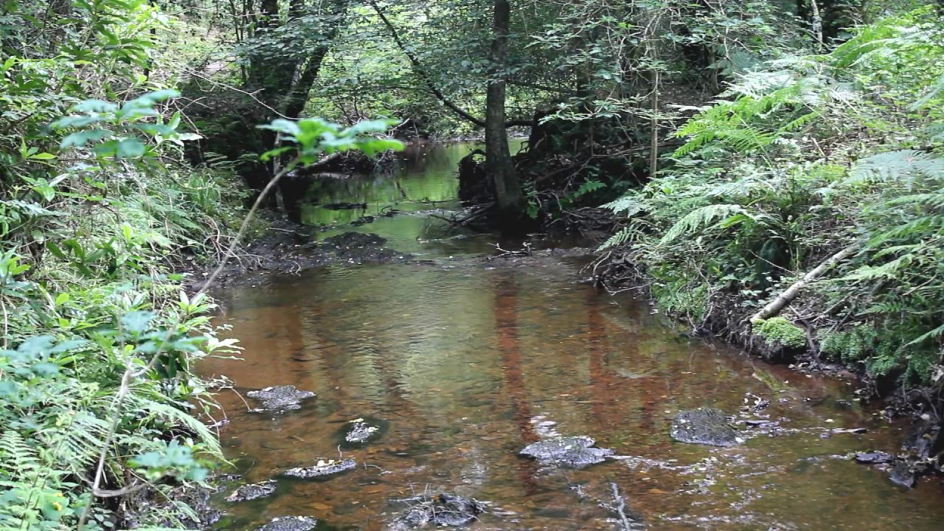
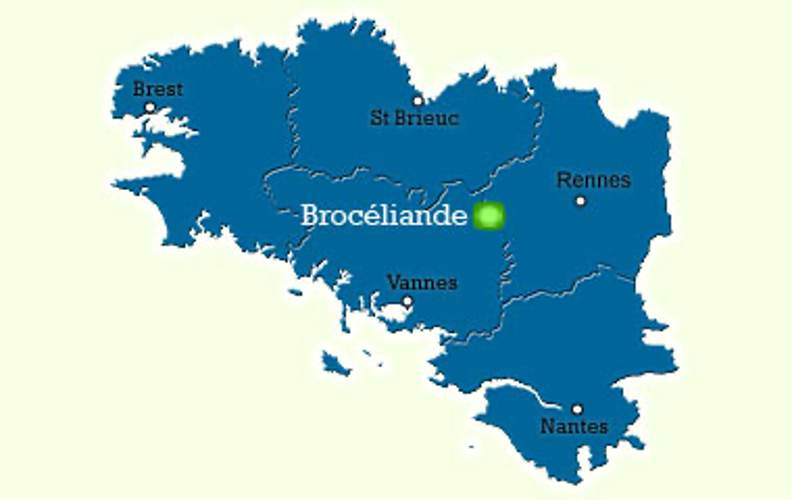
Silver river in Huelgoat
Devil’s cave
One of the legends says that this cave would be the entrance to the road that leads to Hell. It is lined with 99 inns in which maids, more and more desirable as one approaches the goal, serve strong and soft drinks. The traveler who arrives at the last inn without being drunk will be able to turn back.
Otherwise, the devils will make him swallow a horrible mixture of toad and snake blood which is sure to condemn the unfortunate man to damnation.
The Cave of Artus
It was the first site of King Arthur, a legendary figure of the Knights of the Round Table.
The cave would have served as a refuge for the king who is called here Artus.
The Red Bridge
It spans the Argent River at the end of the Allée Violette.
This name comes from the Breton “pont ruz”, this bridge is not red, but you should know that “ru” also comes from the Gallic “roudos” or rather its variant ru, which in French is the “tertre” or the ” hill”.
The red bridge is the mound bridge or the bridge that goes to Artus camp or to the village of Kastell-guibel. Its construction, given that its name is of Gallic origin, must date from the Ossisms of the Artus camp.
The Gulf
Along the D 769 (route de Carhaix) a staircase provides access to the chasm, from which the Argent river falls from a height of 8 meters, and where the water sometimes takes on a blood red color due to of that of the rocks.
According to legend, it is the blood of lovers thrown into the river by Dahut the cruel Princess of Ys daughter of King Gradlon, who led a life of debauchery in this city, as in her castle of Kastell Ar Guibel, an old castle overlooking the abyss and whose ruins were still visible at the end of the last century.
Choosing, each evening, a lover among the most beautiful young people in the country, she (or her faithful servants) threw him into the bubbling waters, before daybreak. The color took a bloody red color each morning.
